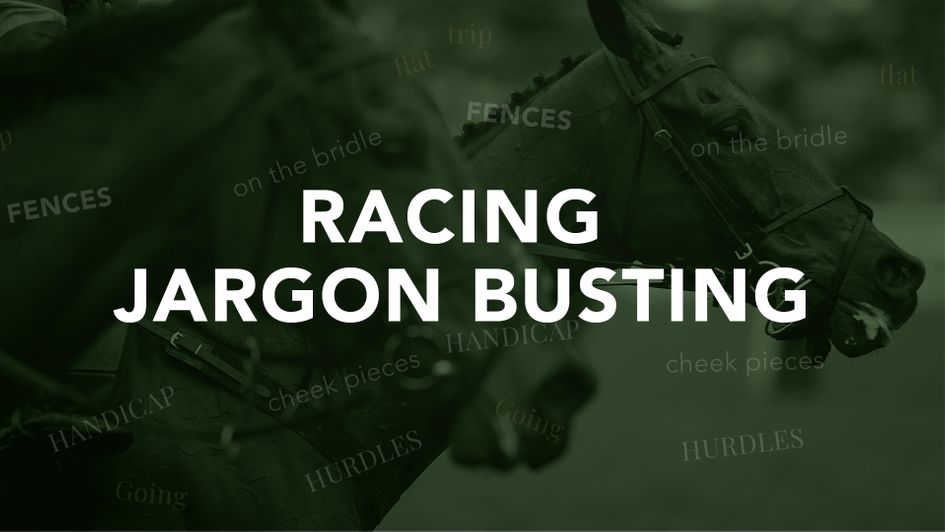
How to read racecards and understand different types of races
Our racing beginner's guide helps you understand a racecard. Watch the explanation video with ITV racing's Oli Bell and read the terms below to get the full picture of the key words, numbers and stats
The Race
FLAT RACING is horses racing on a level surface. The flat season runs from late March or early April, to either late October or early November.
The shortest distance in Flat racing is five furlongs, while the longest distance is two miles and six furlongs.
Flat races are generally for young horses, with most horses starting their career as two-year-olds. When they reach the age of three, they are considered to be at their peak, which is why the “classics” are restricted to three-year-olds.
JUMPS RACING is when horses must leap over obstacles as they race around the track. These can be either hurdles, smaller obstacles, or fences, larger obstacles.
The National Hunt season, also known as the jumps season, traditionally starts in October and runs until the end of April, with the Cheltenham Festival in March the highlight of the calendar.
A National Hunt horse must be three-years-old to make their racecourse debut and, unlike Flat horses, tend to get better with age.
The shortest distance in National Hunt racing is just under two miles, while the longest distance is just over 4m2f, tackled in the Aintree Grand National in April.
HANDICAP OR NON-HANDICAP - A handicap is a race in which each horse is allocated a weight based on its rating, for example, if a horse is rated 95 and carries 9st 5lb, then a horse rated 90 will carry 9st. This allows horses of varying ability to compete on a level playing field.
Not all races are handicaps however, with some of the best races, known as pattern races, seeing all horses carry the same weight – with the exceptions of age/sex allowances.
More guides...
Reading a racecard
Cloth Number - The runners will be sorted by their saddle cloth number, this is the number that will be displayed on their saddle cloth during the race, and is usually located on the far left of the racecard. In Flat racing there is often a bracketed number beside the saddle cloth number, this denoted which stall the horse has been drawn in.
Silks - The “silk” of the owner (the colours that the jockey will be wearing) will be displayed next to the cloth number. If an owner has more than one horse entered in the race, the colour of the cap will vary.
Headgear – Any headgear the horse may be wearing will be displayed in brackets next to the horse’s name. These are shown in abbreviated form i.e. b = blinkers.
Age – The age of the horse is often displayed to the right of the horse’s name. The age of a horse is not always essential knowledge, but sometimes it can be useful.
Weight – Located next to the age is the weight the horse will carry. This will be displayed in thus format: stone-pound. The weight a horse carries is made up of the jockey’s weight, plus any additional weight in the saddlebags.
Official Rating – Often abbreviated to OR, the official rating is the handicap mark a horse is given. In handicaps this mark determines the amount of weight a horse will carry.
Jockey – The jockey who has been booked to ride the horse will usually be displayed toward the right-hand-side of the page.
Trainer – The horse’s trainer will be displayed close to the jockey’s, usually underneath. The racecard will also often display the nationality of the trainer.
Form – A horse’s recent form is usually displayed next to, or underneath, his/her name. To the untrained eye this may look like a random selection of numbers, but it is actually how the horse has performed in their most recent outings. Form should be read from left to right, with the number on the furthest right indicating the horse’s most recent run. The number represents the position the horse finished in. Abbreviations are also used here. P = Pulled Up, F = Fell, UR = Unseated Rider, BD = Brought down, R = Refused. A hyphen indicated a new season, while a forward slash indicates two seasons have passed.
Horse Summary – Some racecards will include a brief summary on the horse’s chances underneath each horse. This will be a sentence or two on how the publishers of the racecard think the horse will perform.
Verdict – At the bottom of the race you will often find the race verdict. This is the publisher of the racecard’s opinion on how the race will likely unfold. They will often tip a horse to win, citing their reasons as to why, as well as possibly naming a couple of other horses with particular chances.
Betting forecast – At the bottom of the page some publications will provide a betting forecast. These are the prices that the publishers of the racecard expect each horse to be priced at. These are only a guide and should only ever be used as thus.
Recent winners – Some racecards will include some of the most recent winners of the race. This is usually located at the very bottom of the race.
Next Off
Most Followed
MOST READ RACING



















